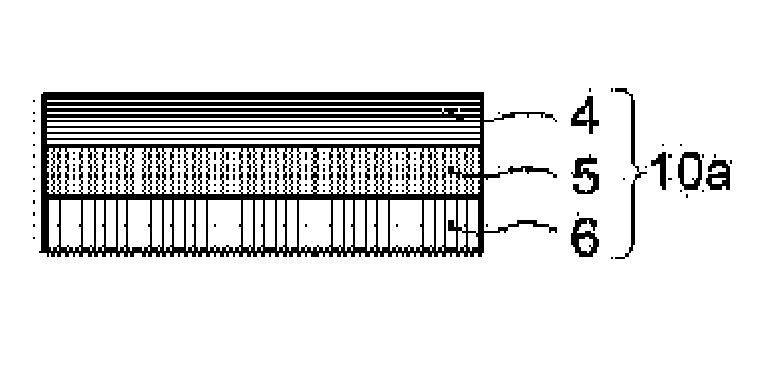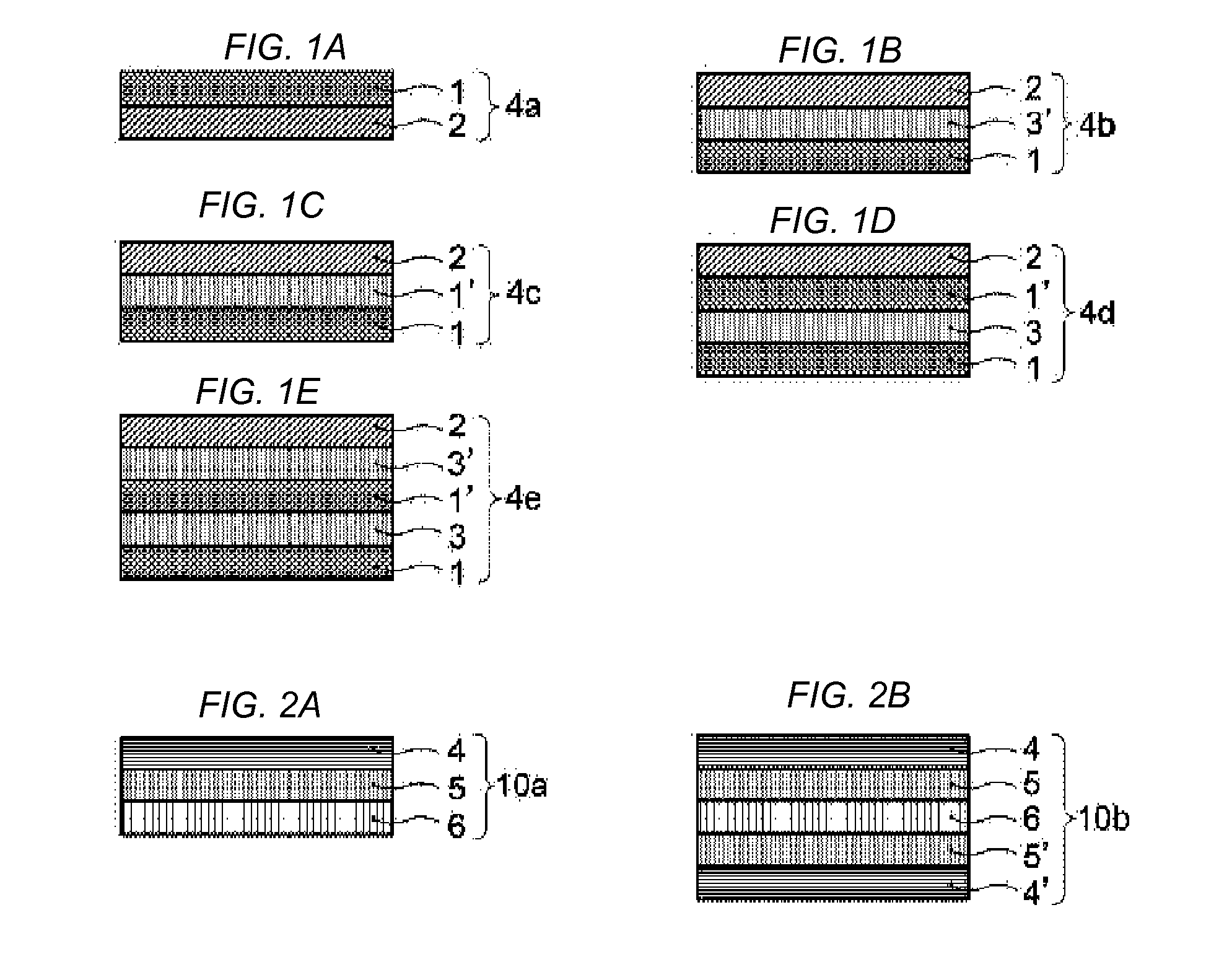Optically anisotropic film
a technology of optical anisotropy and film, applied in the field of optical anisotropy films, can solve the problems of insufficient transparency of conventional optical anisotropy films, and achieve the effect of high transparency
- Summary
- Abstract
- Description
- Claims
- Application Information
AI Technical Summary
Benefits of technology
Problems solved by technology
Method used
Image
Examples
example 1
[0147]A normal-pressure plasma surface-treating machine (roll direct head type AP-T04S-R890, manufactured by Sekisui Chemical Co., Ltd.) was used to generate plasma at 1.3 kV in an atmosphere containing nitrogen and oxygen (ratio by volume of nitrogen to oxygen=99.9 / 0.1) to treat a surface of a roll-form cycloolefin polymer film (ZF-14, manufactured by Zeon Corp.) with the plasma over a length of 100 m. A die coater was used to apply the composition for forming orientation film (1) onto the cycloolefin polymer film surface subjected to the plasma treatment. The resultant workpiece was carried to a hot-wind drying furnace of 90° C. temperature to be dried for 1 minute. In this way, an orientation film was yielded. Subsequently, a die coater was used to apply the composition for forming an optically anisotropic film (1) onto the outer surface of the resultant orientation film, and the workpiece was carried to a drying furnace of 80° C. temperature to be dried for 1 minute. A high-pres...
reference example 1
[0148]The normal-pressure plasma surface-treating machine (roll direct head type AP-T04S-R890, manufactured by Sekisui Chemical Co., Ltd.) was used to generate plasma at 1.3 kV in an atmosphere containing nitrogen and oxygen (ratio by volume of nitrogen to oxygen=99.9 / 0.1) to treat a surface of a roll-form cycloolefin polymer film (ZF-14, manufactured by Zeon Corp.) with the plasma over a length of 100 m. A die coater was used to apply the composition for forming orientation film (1) onto the cycloolefin polymer film surface subjected to the plasma treatment. The resultant workpiece was carried to a hot-wind drying furnace of 90° C. temperature to be dried for 1 minute. In this way, an orientation film was yielded. Subsequently, a die coater was used to apply the composition for forming an optically anisotropic film (2) onto the outer surface of the resultant orientation film, and the workpiece was carried to a drying furnace of 80° C. temperature to be dried for 1 minute. A high-pr...
example 2
[0149]A roll-form retardation film (3) having the optically anisotropic film (3) was yielded in the same way as in Example 1 except that the composition for forming an optically anisotropic film (3) was used.
PUM
| Property | Measurement | Unit |
|---|---|---|
| Percent by mass | aaaaa | aaaaa |
| Percent by mass | aaaaa | aaaaa |
| Water contact angle | aaaaa | aaaaa |
Abstract
Description
Claims
Application Information
 Login to View More
Login to View More - R&D
- Intellectual Property
- Life Sciences
- Materials
- Tech Scout
- Unparalleled Data Quality
- Higher Quality Content
- 60% Fewer Hallucinations
Browse by: Latest US Patents, China's latest patents, Technical Efficacy Thesaurus, Application Domain, Technology Topic, Popular Technical Reports.
© 2025 PatSnap. All rights reserved.Legal|Privacy policy|Modern Slavery Act Transparency Statement|Sitemap|About US| Contact US: help@patsnap.com



